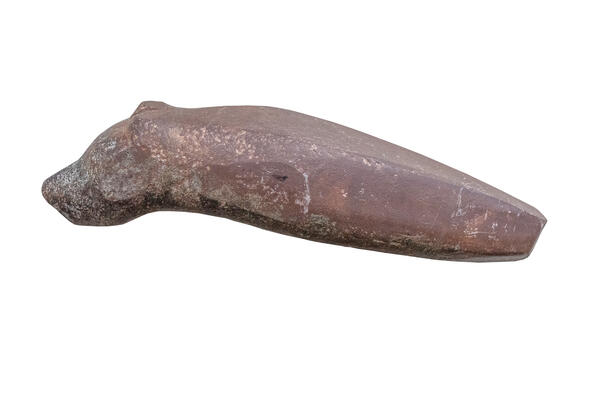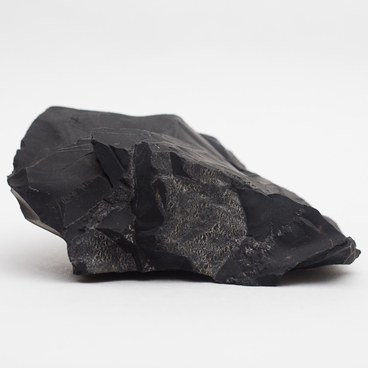In 1960, in the town of Kondopoga, archeologists discovered a miniature hammer made of diabase stone. The hammer was shaped in form of a bear’s head. The ears, the frontal part of the head, the neck, the eyes, and the nostrils were rendered in relief with small incisions. In the dents, particles of the mineral paint, ocher, were preserved. The blade part resembled battle axes — the blade of the weapon was lowered, but not sharpened. In cross-section, the hammer was triangular — it was never used for chopping, most likely, it was used as an object of worship. The hammer seems to have been nearly finished, but the researchers speculate that it was “rejected”, possibly due to poor drilling.
An archaeologist from Moscow Alexander Bryusov wrote in his works that the “sculptural hammers” had no practical purpose, they were not used as weapons or tools, since they were made in a negligent manner, had an opening that was too narrow and a “blunt” edge. Similar conclusions are found in the works of other researchers as well.
On the territory of Sweden, Finland, and the Northern European part of Russia, about 35 items of this kind have been found. Most of them have a sculptural image of a bear on their butts; some of the rest have a moose image. The fact that the ancient craftsmen sculpted bear heads more often suggests that there was the cult of this animal among the tribes in the forest zone of the northwestern part of Europe.
Probably, craftsmen did not have enough time to finish some of the hammers; because of this, it is impossible to establish which animal is depicted on the butt. Some of the shaped hammers do not have a completed hole. Many of them, including the exhibit from the museum’s collection, have traces of ocher.
Such hammers could be attached not only to a short wooden handle but also to a long spear-shaped shaft. Among the rock carvings, petroglyphs, near the shores of the White Sea, one could see scenes of processions, where participants carry tops resembling birds, skulls, and heads of animals on poles. Petroglyphs in Sweden and Norway also feature images of people holding poles with a sculpted image of an elk’s head.
An archaeologist from Moscow Alexander Bryusov wrote in his works that the “sculptural hammers” had no practical purpose, they were not used as weapons or tools, since they were made in a negligent manner, had an opening that was too narrow and a “blunt” edge. Similar conclusions are found in the works of other researchers as well.
On the territory of Sweden, Finland, and the Northern European part of Russia, about 35 items of this kind have been found. Most of them have a sculptural image of a bear on their butts; some of the rest have a moose image. The fact that the ancient craftsmen sculpted bear heads more often suggests that there was the cult of this animal among the tribes in the forest zone of the northwestern part of Europe.
Probably, craftsmen did not have enough time to finish some of the hammers; because of this, it is impossible to establish which animal is depicted on the butt. Some of the shaped hammers do not have a completed hole. Many of them, including the exhibit from the museum’s collection, have traces of ocher.
Such hammers could be attached not only to a short wooden handle but also to a long spear-shaped shaft. Among the rock carvings, petroglyphs, near the shores of the White Sea, one could see scenes of processions, where participants carry tops resembling birds, skulls, and heads of animals on poles. Petroglyphs in Sweden and Norway also feature images of people holding poles with a sculpted image of an elk’s head.



